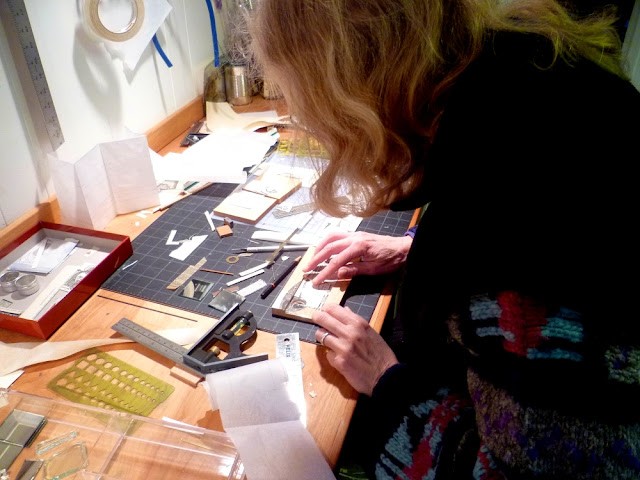Artists' Books

An artist's book is always best in person, when you can handle it, and look and read at your own pace. The intimacy of picking up a book and turning its pages is a pleasure many of us get attuned to at an early age. Coupling that movement through a book with an intense aesthetic experience—with content, materials, and structures that surprise and challenge the reader—creates the interactive journey that is the essence of the art form.
The artist’s books I’ve made over the years have mostly dispersed to library collections, thanks to book arts ambassadors Laura Russell of 23 Sandy Gallery and Alicia Bailey of Abecedarian Artists’ Books. I’ve kept a few of them. If you’d like to arrange a visit, I’d be happy to show them to you! But the only place you can see them all together is here on my website, on the Art side of my portfolio.
As a community, book artists represent the fertile intersection of a gamut of art forms, disciplines, and ways of thinking. Everyone has wandered in from somewhere else. Many arrive from allied book arts, such as book repair and restoration, fine binding, letterpress, and papermaking. Other visual arts are also well represented, naturally enough. I’ve met book artists who’ve wandered in from painting, sculpture, printmaking, and photography; from metalworking, ceramics, and graphic design. But also from science, teaching, and music.
I wandered in from poetry. My last year of architecture school, I’d taken a seminar in poetic forms, and decided I wanted to be a poet. After working for three years—just long enough to take and pass my licensing exam—I moved to Tucson for an MFA program in poetry.
I found, of course, that exchanging drawing for writing was not a simple trade-up. I heard about a class over in the art college called Mixed Media Book. Taking that class, in the spring of 1991, was my first introduction to artists’ books. They seemed a miraculous intersection of poetry and architecture. I started making lyrical experiments with collage and found objects, unorthodox materials and structures. Writing could play a generative and supporting role, freed from the demands of the blank page. And, in contrast to poetry, there was an ease to book arts, a dynamic, accessible art form with a quickly expanding audience. Over the next few years, making books supplanted writing as my go-to means of self-expression.
Until recently, when I started writing children’s books—for me, a miraculous intersection of poetry, architecture, and artists’ books, with dollops of linguistics and animation, and a hope of social utility thrown in…